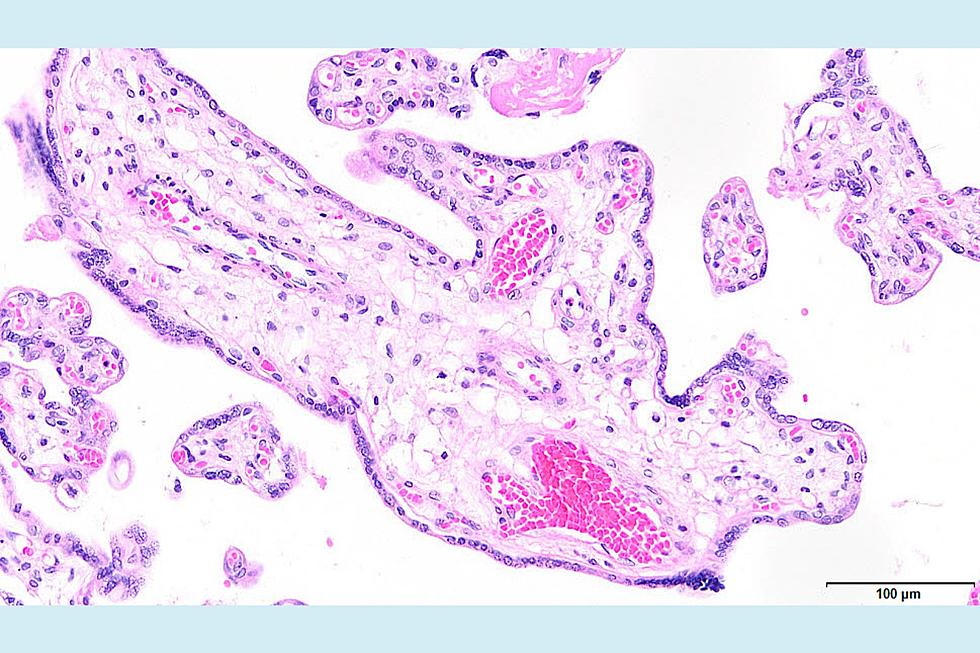
How food, health products affect pregnancy: NJ researchers examine placenta
⚫ A new placenta center at Rutgers University will support healthy pregnancies
⚫How does the placenta keep toxins away from babies while providing nutrition?
⚫The goal is to understand how chemicals travel in and out of the placenta
Rutgers University is teaming up with other top schools to launch a research center funded with a $5 million grant by the National Institutes of Health to find out how the placenta will support healthy pregnancies.
How does the placenta keep harmful substances away from developing babies, all while still providing proper nutrition to them?
The exact mechanisms remain unknown. That is why Rutgers University, Tulane University, the University of Pennsylvania, the University of North Carolina at Chapel Hill, and the University of Rochester teamed up to launch the Integrated Transporter Elucidation Center, which will operate from the Rutgers Biomedical Health Sciences campus in Piscataway, under the leadership of Rutgers professor of pharmacology and toxicology, Lauren Aleksunes.
When Aleksunes was working as a community pharmacist, she said she found the lack of high-quality information about the safety of everyday products on the health of pregnancy very frustrating.
So, when she opened her research lab at Rutgers, this became a passion area. Trying to understand how chemicals that we’re exposed to throughout pregnancy are going to potentially make their way to the baby. The placenta is a connection between the mom and baby. But Aleksunes said nobody really knows how chemicals move back and forth between mom and baby.
“People need to know whether the chemicals in their diet, personal care products, and medications can impact their babies. Our goal at InTEC is to better understand how these chemicals travel in and out of the placenta and if they can reach the baby and influence their development,” Aleksunes said.
To do this, Rutgers needed to team up with other leading scientists like Hao Zhu at Tulane who uses machine learning and computer science approaches to identify new interactions between transporter proteins and chemicals. Another team under Dan Huh at UPenn will use an innovative model, a vascularized placenta-on-a-chip to simulate the transfer of molecules across the human placenta.
“The cells are taken after a pregnancy has happened from their placenta and essentially put it back together again, but in an engineered system. So, we can actually measure chemicals moving from essentially what would be the mom’s side of the placenta to the baby’s side, and back,” Aleksunes said.
Researchers led by Jacqueline Tiley at the University of North Carolina at Chapel Hill will use tools they developed to identify relevant proteins and how these proteins can be monitored in the blood across pregnancy.
At Rutgers, Aleksunes’ team will study how transporter proteins carrying nutrients, dietary supplements, medications, and toxic chemicals work during pregnancies. Some will test how individual placenta cells respond to various stimuli in the lab. Others will examine how environmental factors influence placenta transporters during healthy, unhealthy, and even complicated pregnancies.
When it comes to a woman taking medications, the main focus is to understand what doorways are the medications getting crossed, or maybe they’re not getting crossed at all, she said.
“We are trying to identify different proteins. Some we already know about but we need to know a little bit more about how they work. But others, these pathways are there but we don’t know why they’re there. Are they involved in bringing a certain nutrient across? Are they involved in preventing a certain toxic chemical from getting across? We are trying to reveal that,” Aleksunes said.
This is done by using some artificial intelligence approaches, looking at the structures of chemicals and ways they can potentially interact with gateways across the placenta, making predictions, and then going into the lab, and testing those predictions, she said.
The researchers will look at the relationships using epidemiology where they use tissue from healthy pregnancies, profile these pathways, and understand if someone is exposed to a chemical during pregnancy, would that change the size of the baby.
With the help of all the researchers involved, as well as students in the pharmacy, medical, public health, and toxicology departments, the hope is that this work over the next five years will lead to more healthy pregnancies and children.
Report a correction 👈 | 👉 Contact our newsroom
LOOK: Best counties to raise a family in New Jersey
Gallery Credit: Stacker

